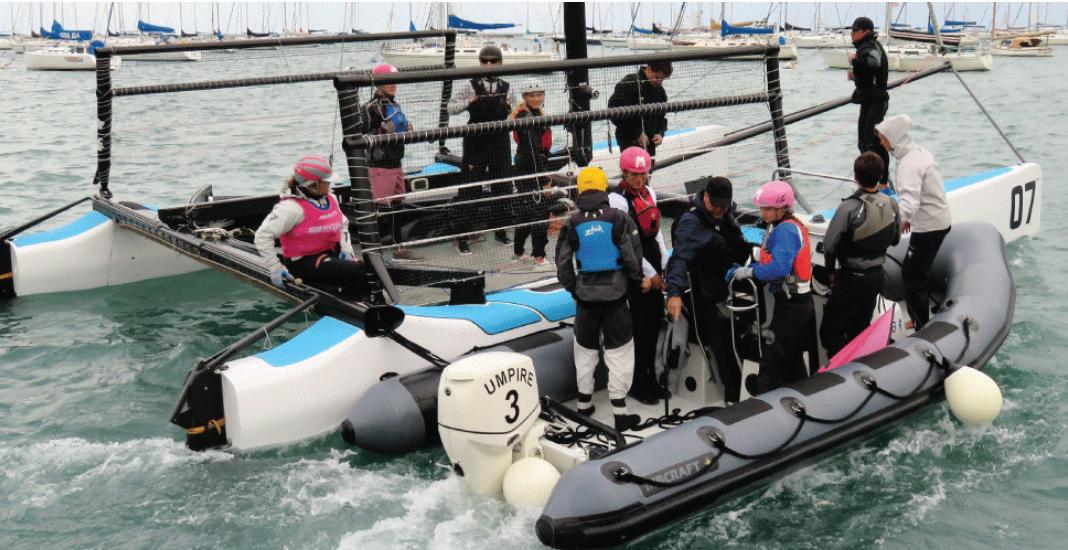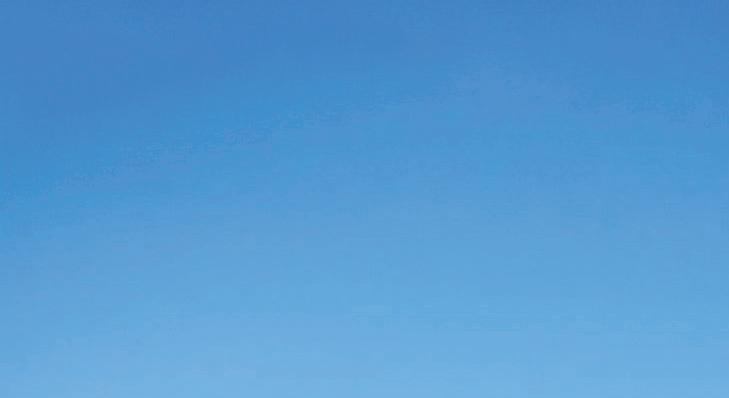: 0 2 0 2 E C A R K O O H E TH ” s k ar m d i “Sk
By Jamie Sunderland
It was a cool clear morning on Friday June 5th. I had just launched my Tartan Ten (T-10) named “Skidmarks” after its winter storage at Skyway Yacht Works. The Chicago harbors were not yet open due to the delays caused by COVID-19, but they were allowing in-water staging at Montrose harbor and 31st Street. As we headed out of the Calumet river into the lake, my phone buzzed with a message from another T-10 owner. “Mac Canceled. Signed up for Hook. Afraid they’ll cut the numbers at some point. Get in before the close registration”. It was just on 10am, the notice had only come out from the Mackinac Race Chairman about 15 minutes earlier. Soon I had half a dozen messages from other people from the T-10 fleet. And so, before we had even made it halfway to Chicago I had signed up for the Hook Race without being sure we’d actually do it, or whether that race too would be canceled.
I discussed the race with the crew. Decided to keep the crew numbers smaller than usual. We agreed that we would all get COVID tests the week before the race and take extra precautions, including wearing masks, limiting crew below deck at the same time, not sharing food or drinks, having our own sleeping bags..etc. My wife and I took the boat up to Racine the week before the race. The others came up separately and stayed the night before the race in a hotel. The weather forecast looked good. Some medium strength Southerly winds would make for a fast spinnaker run up the lake. The wind was expected to strengthen later in the day and shift to the South-West as we passed Sheboygan. With any luck we’d have the spinnaker up all the way to Death’s Door. Either way it was going to be a fast run. Records were likely to tumble. Our race started reasonably well. A nice clear-air start in the middle of the line. T-10s Erica, Minister, Grytviken and Amateur 2 off to port and a cluster of other boats including Retention, Water Works, Meat and others crowding the boat-end as often happens with T-10 starts. We passed Wind Point heading nearly due North, towards Milwaukee. My plan was to stay relatively close to the coastline. I was expecting the wind to strengthen and shift Westerly in the afternoon and I hoped if the shift was gradual enough, I could carry the spinnaker longer if I had a few extra degrees available. Passing Milwaukee we were about 5 miles offshore and could see the skies darkening to the West. We had been monitoring the storm from on the chart plotter via Sirius XM weather service. The wind observations at Madison showed only a small bump in windspeed as the storm passed, jumping up to 15 kts or so before settling back to around 11. However as the front continued toward the lake it started to grow and intensify. It looked like it might just pass to the South of us and we were hoping we might only get the edge of it. No such luck, it continued to grow and build until it got out over the lake, and then it burst dropping heavy rain and the winds coming from it increased quickly. First gust near 20 kts 19 Blinker | COVID Edition 2020
we doused the chute. The wind continued to build, 25 then 30 as we ran with it on a starboard tack heading out into the lake at about 50 degrees true. It seemed like the storm was following us and continuing to grow. First gusts to 35 kts we dropped the Jib. Darren and Matt wrestling it onto the foredeck and securing it to the toe-rail with sail ties. By this time the waves were getting up to around 8 or 9 feet. The winds were very gusty mostly above 35 kts, but we saw more than 50 flash on the instruments several times. Boat speed was mostly around 10-12 kts, but we also saw 14 at some stage which is literally “off the charts” for a T-10. The wind and rain seemed to stabilize a little and we continued out into the lake running with the storm. I was pretty sure we were the western most T-10 when the storm hit but we’d been running with it for an hour or so by this stage and I was till working hard to keep the boat relatively stable as we rode the waves and gusts. I wasn’t exactly sure where we were, and I was too busy driving to be consulting the chart plotter; but I knew we were further offshore than I wanted to be and I also reasoned that we would be out of the storm sooner if we could run North West rather than North East. It was still blowing too hard to safely complete a gybe, so we decided to try a “chicken-gybe”, tacking through 270 degrees. With everyone ready we tried to push it around as quick as possible, but just short of head-towind we lost all momentum. So it was back onto starboard tack, and we continued further into the lake, back on our 50 degree track. A few moments later, one of the crew said “ah, our race is over”, and then I heard a tinkling sound and looked up to see a lot of slack in the leeward shrouds and the spreader waiving in the air. Quick, get the jib halyard onto the toe rail on the port side. Then the spinnaker halyard too. Check there’s no lines in the water, I need to start the engine so we can head-up and get the main down. All hands working together we quickly got the main down, just stuffing it down the companionway into the cabin. The main halyard joining the other halyards on the port side. Crank it with the winch to try to stop the mast bending and flexing as we ride over the still significant waves. We were now more than 24 miles from Milwaukee and only making about 2 kts motoring into the wind. Port Washington was a little closer, but it looked like another sizable storm cell was headed that way. After about an hour of motoring the storm eased up a little. The rain stopped, the wind dropped of a little and our boat speed increased to around 4 kts. Fortunately, the next cell that hit Port Washington went just north of us and about 5 hours later we were safely docked at South Shore Yacht Club in Milwaukee, where we were warmly welcomed. We waited an extra day before motoring back to Chicago with calm seas and a gentle following wind. The port-side spreader had pulled the 10 bolts securing it out of the mast. The spreader brackets have since been welded onto the mast and a couple of weeks later Skidmarks was back in the water to compete in the VERVE cup. Our first attempt at the Hook race did not quite go to plan, but I do enjoy distance racing and this will definitely be one to remember - like my first Mac onboard Amateur 2 where we were beating into a Northerly for hours before breaking a forestay.










